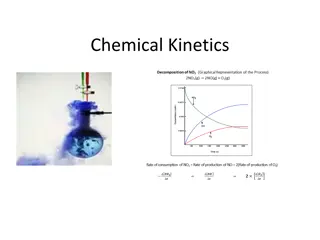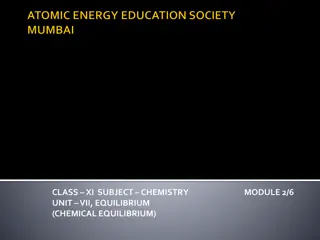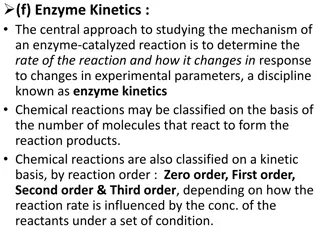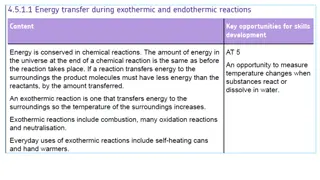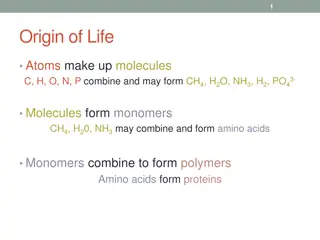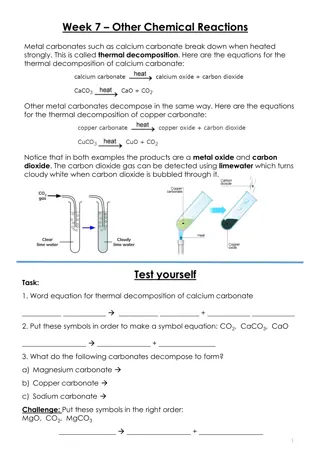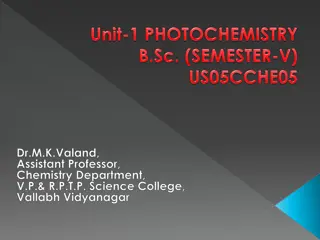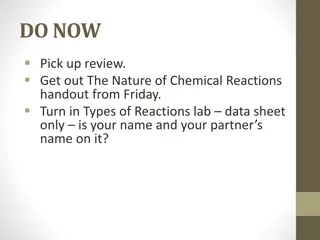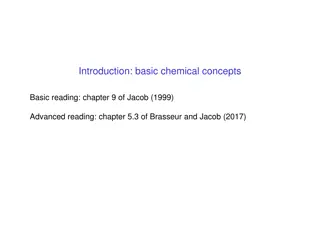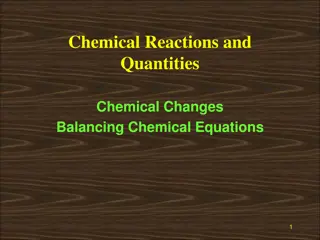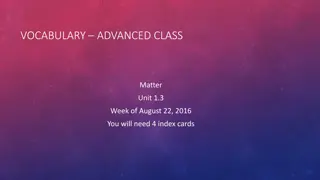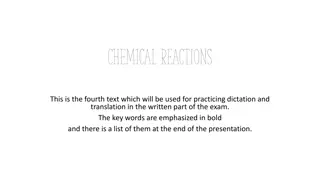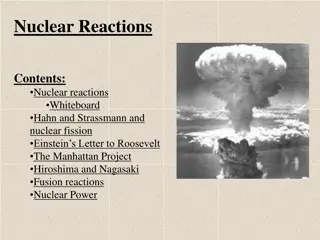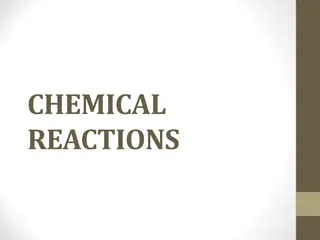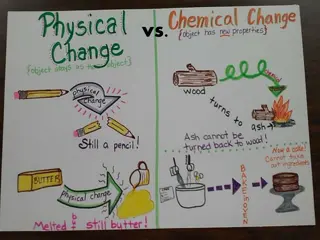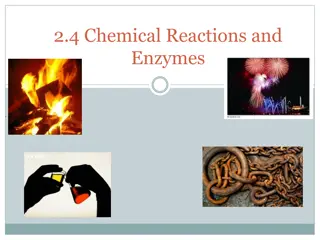Energy Changes in Chemical Reactions Explained
Exothermic reactions release energy to the surroundings, examples include respiration and combustion, while endothermic reactions absorb energy, like in photosynthesis. By measuring temperature changes and observing reaction profiles, we can understand how bond-breaking and bond-making processes drive changes in energy.
Download Presentation

Please find below an Image/Link to download the presentation.
The content on the website is provided AS IS for your information and personal use only. It may not be sold, licensed, or shared on other websites without obtaining consent from the author.If you encounter any issues during the download, it is possible that the publisher has removed the file from their server.
You are allowed to download the files provided on this website for personal or commercial use, subject to the condition that they are used lawfully. All files are the property of their respective owners.
The content on the website is provided AS IS for your information and personal use only. It may not be sold, licensed, or shared on other websites without obtaining consent from the author.
E N D
Presentation Transcript
Energy changes Exothermic reactions Examples: respiration, combustion, oxidation, neutralisation Energy exits reaction heats surroundings Thermometer readings rises Uses: self heating can and hand warmers
Energy changes Endothermic reaction Examples: photosynthesis, thermal decomposition, reaction of citric acid and sodium hydrogencarbonate Energy enters reaction (takes in energy) cools surroundings Thermometer readings fall Uses: sports injury packs
1. measure volume of hydrochloric acid in a measuring cylinder pour hydrochloric acid into suitable container measure temperature of hydrochloric acid using a thermometer measure mass of magnesium using a balance add magnesium to hydrochloric acid and stir measure maximum temperature reached calculate the change / rise in temperature repeat procedure for same mass of magnesium find mean temperature rise repeat with different masses of magnesium 2. 3. 4. 5. 6. 7. 8. 9. 10.
Reaction profiles Reaction profiles
Bond Breaking and Bond making For a reaction to happen bonds have to be broken to then form new ones H H H H C O O O O Bond Breaking Bond Forming Energy in chemicals H O O C O O O H H H H H H O O C O H H Progress of reaction
BENDOMEX Bendo = Breaking is endo Mex = Making is exo
BENDOMEX Where the energy from bond forming exceeds that needed for bond breaking the reaction is exothermic. Where the energy for bond breaking exceeds that from bond forming the reaction is endothermic. Exo Endo Bonds break Bond forming Energy in chemicals Energy in chemicals Bonds form Bonds break products reactants H H reactants products
How does a battery operate? If magnesium is losing electrons and copper is gaining electrons, which metal is being reduced and which metal is being oxidised Two metals of different reactivity The most reactive metal always forms the negative electrode. The electrons flow from the most reactive metal to the least reactive metal An electrolyte (salt solution) Wires The bigger the difference in reactivity between the metals, the higher the voltage of the battery Remember OILRIG (oxidation is loss, reduction is gain)
Hydrogen goes through a catalyst and splits in protons and electrons. The protons (H+) move through the electrolyte and the electrode move round the electrode and meet up on the other side Oxygen gas reacts with (is reduced) by the hydrogen and the electrons to produce water. 2H2 4H+ + 4e- O2 + 4H+ + 4e- 2H2O Overall reaction = H2 + O2 H2O



